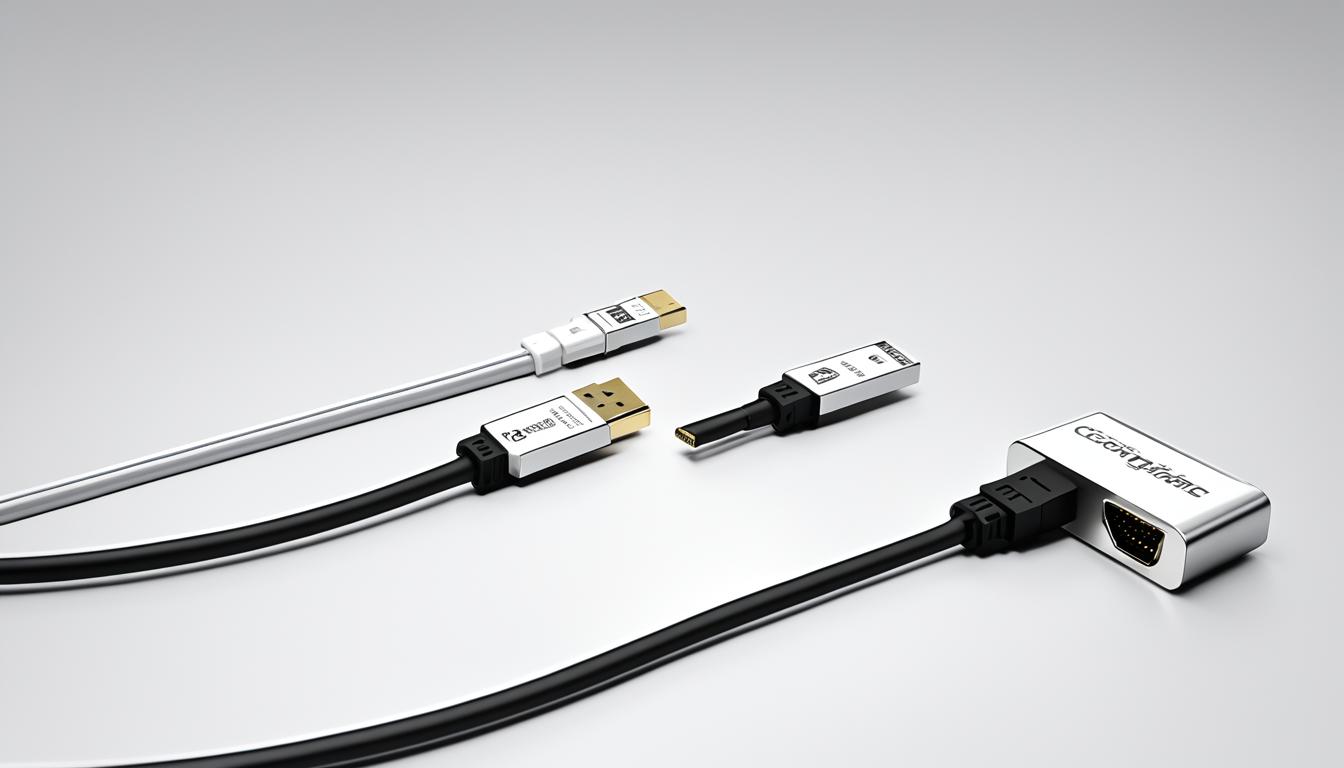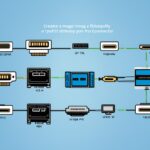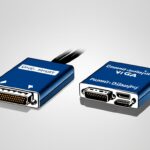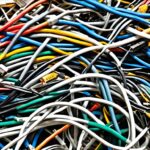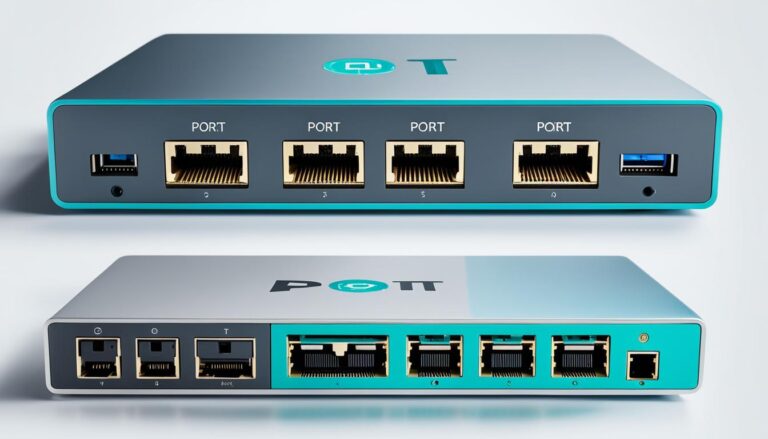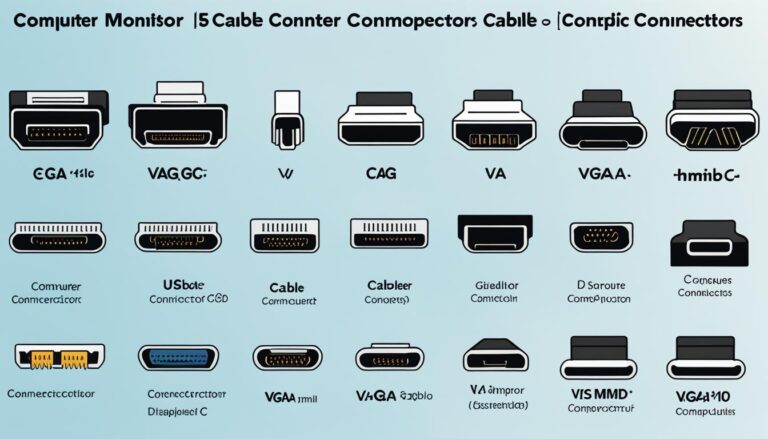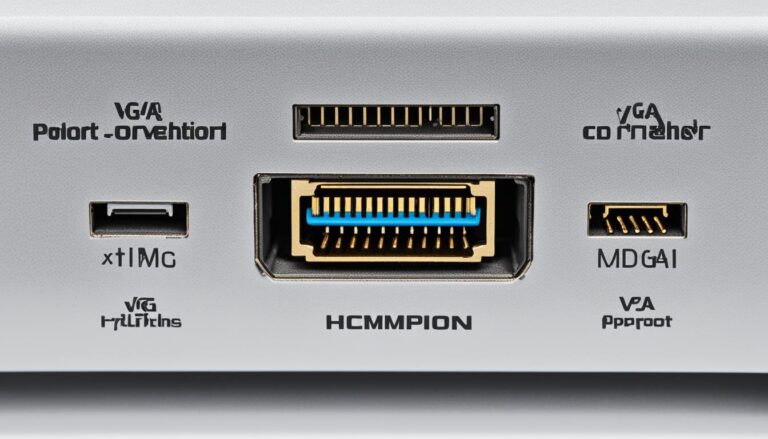DisplayPort cables are vital for linking computers or devices to monitors. They send high-quality video and audio signals. To get the best performance and fit, choosing the right DisplayPort cable is key. Consider the cable version, length, and the top resolution and refresh rate it supports. Understanding the various DisplayPort cables and their features helps you make a smart choice. You will find the ideal cable for your high-resolution video needs.
Standard DisplayPort Cables Support All DisplayPort Systems
Standard DisplayPort cables are key for hooking up DisplayPort devices to monitors. They carry top-notch video and audio signals. These cables fit with any DisplayPort monitor or source device. They suit both old and new systems and screens perfectly.
These cables stand out because they handle multi-stream and support 5K resolution at 60Hz. You get to see sharp, bright pictures and smooth videos. This makes everything from gaming to watching films a great experience.
Also, there are DisplayPort Certified cables that offer even better connections. These cables meet tough standards. They handle over 5K resolutions, even up to 8K, for cutting-edge display setups.
“Standard DisplayPort cables ensure compatibility with a wide range of systems and displays, making them an excellent choice for users seeking flexibility and performance in their setups.”
If you’re hooking up a gaming computer to a high-refresh monitor or setting up many monitors, these cables are perfect. They’re highly compatible, support multi-streaming, and work with high-resolution displays. They are reliable and ready for the future.
Key Features of Standard DisplayPort Cables
- Compatible with any DisplayPort source device and any DisplayPort monitor
- Support multi-stream and display resolutions up to 5K at 60Hz
- Versatile and suitable for both older and newer systems and displays
- DisplayPort Certified cables available for higher-quality connections and support for resolutions beyond 5K
With standard DisplayPort cables, you get the best in video and audio quality. This ensures a smooth and immersive viewing experience across various applications. They’re ideal for anyone wanting the best performance and compatibility in their DisplayPort setups.
Different Connector Types of DisplayPort Cables
DisplayPort cables offer various connector types. This makes them compatible with different devices and systems. Knowing these connector types helps you choose the right DisplayPort cable for your needs.
1. USB-C Connector
The USB-C connector is the most common type for DisplayPort cables. It’s found in many new devices and supports Thunderbolt 3 and 4 ports. The USB-C connector is easy to use with its reversible design. It allows fast data transfer and power delivery.
2. Standard DisplayPort Connector
The standard DisplayPort connector is similar in size to a USB-A connector. It’s used in desktop graphics cards, monitors, and docking stations. This connector ensures a stable connection for sending high-resolution video and audio.
3. Mini DisplayPort Connector
The mini DisplayPort connector is smaller but powerful. It appears on graphics cards and some laptops. This connector lets you link multiple monitors to your device. Despite its size, it delivers high-quality video and audio.
4. Thunderbolt Compatibility
Thunderbolt technology works with DisplayPort. You can use standard DisplayPort cables with Thunderbolt ports. This lets you connect Thunderbolt devices to displays. It also supports quick data transfer and daisy-chaining of devices.
Knowing about DisplayPort cables’ connector types ensures your devices connect properly. This knowledge helps match your devices with the right displays.
Choosing Certified DisplayPort Cables
For top-notch device connections, certified DisplayPort cables are crucial. They guarantee better video and audio. Choosing them for your needs ensures quality.
High Bit Rate and 4K Compatibility
Certified DisplayPort cables handle high bit rates well. This means a smooth, reliable connection. They are perfect for 4K and provide the bandwidth needed for top visuals.
Specially Constructed for High-Bandwidth Applications
Standard DisplayPort cables might not cut it for high-bandwidth tasks. DP8K-certified cables are made for this. They ensure your advanced setups work perfectly.
Emphasizing Cable Quality
Quality matters as much as certification. Buy from trusted brands with DisplayPort certification. Quality cables offer better signals and last longer, making reliable performance a sure thing.
Here’s why choosing certified DisplayPort cables is smart:
| Standard DisplayPort Cables | DP8K-Certified DisplayPort Cables | |
|---|---|---|
| Compatibility | Compatible with most configurations | Ideal for high-bandwidth applications |
| Resolution Support | Supports standard resolutions | Capable of handling 4K and multi-stream capabilities |
| Signal Integrity | Vulnerable to signal loss or degradation | Provides superior signal integrity for reliable connections |
| Durability | Varies depending on cable quality | Constructed for long-lasting performance |
Selecting certified DisplayPort cables ensures the best quality connections. Remember, for great performance, go for quality and certified brands.
DisplayPort Cable Specs and Considerations
When selecting a DisplayPort cable, several specifications need consideration. Check the cable version, length, and resolution support. This ensures the cable meets your needs.
DisplayPort Cable Version and Compatibility
The cable’s version affects its features and capabilities. DisplayPort versions like 1.2, 1.3, and 1.4 offer different performance levels. Ensure the cable’s version matches your equipment for compatibility.
DisplayPort 1.2 cables support up to 4K resolution at 60Hz. DisplayPort 1.4 cables go up to 8K resolution with refresh rates of 120Hz or 144Hz. Choosing the right cable version maximises your devices’ performance and quality.
Cable Length Considerations
The length of your DisplayPort cable is key. Assess the setup of your workspace to find the ideal length. A suitable cable avoids signal loss and maintains quality.
Long cables might weaken connections, affecting audio and video. Too short cables limit device positioning. The right cable length keeps signal integrity high.
Maximum Resolution and Refresh Rate
It’s essential to verify the cable’s maximum resolution and refresh rate. Each version supports different resolutions and refresh rates.
DisplayPort 1.2 covers up to 4K resolutions. DisplayPort 1.4 supports up to 8K. The refresh rate affects the smoothness of the video, ranging from 60Hz to higher.
Match the cable’s specs with your device’s requirements for best graphics. Make sure your display supports these features too. This ensures top performance.
Cable Construction and Quality
The make and reliability of the DisplayPort cable are key for its performance and life span. When picking a cable, think about what makes it dependable.
Cable Quality
A top-quality DisplayPort cable offers a steady connection for sound and picture signals. Aim for cables designed to perform well and last long. Gold-plated connectors are a sign of good cable quality.
Gold-plated connectors lead to better signal flow and less corrosion. This means better signal quality and less chance of losing data.
Gold-plated connectors keep the link between your device and the screen strong. This helps avoid signal breaks or disturbances.
Cable Shielding
Cable shielding is vital in a DisplayPort cable’s design. High-quality cables tend to have better shielding. This reduces electromagnetic interference (EMI) and keeps signal quality high.
Strong shielding blocks out disturbances from external electrical and radio signals. This keeps the audio and video quality high.
Choosing a cable with top-notch shielding means clear sound and video. This is true even in places with lots of electromagnetic activity.
Cable Thickness
A cable’s thickness shows its durability and resistance to harm. Thicker cables are usually tougher and break less easily than thinner ones.
More thickness means more protection against damage. This cuts down on the chances of losing signal or facing interruptions.
Buying a thick cable means it can handle regular use well. It stays in good shape over time.
Remember the value of cable build and quality when shopping. Choose cables with gold-plated connectors, strong shielding, and the right thickness. This ensures a steady and lasting connection.
Conclusion
Choosing the right DisplayPort cable is vital for the best performance. Think about the cable version, length, and the video quality it supports. Also, consider the cable’s construction. This will help you pick a cable that matches your needs.
It’s wise to buy certified DisplayPort cables from known brands. These cables handle high speeds and multiple video streams well. They ensure your video plays smoothly without issues.
When picking a DisplayPort cable, look at its build and quality too. Cables with gold-plated connectors work better and last longer. They also resist corrosion. Make sure the cable is well-shielded to reduce interference. This way, you can enjoy clear, uninterrupted video.
FAQ
What are DisplayPort cables used for?
DisplayPort cables connect computers to monitors. They transmit video and audio signals.
Why is choosing the right type of DisplayPort cable important?
Choosing the correct DisplayPort cable ensures top performance and compatibility.
Are standard DisplayPort cables compatible with all systems?
Yes, standard DisplayPort cables work with any DisplayPort source and monitor.
What resolutions and refresh rates do standard DisplayPort cables support?
They support multi-stream and up to 5K resolution at 60Hz.
What are the different connector types of DisplayPort cables?
There are USB-C, standard, and mini DisplayPort connector types.
What devices use the USB-C connector type?
Newer devices, including those with Thunderbolt 3 and 4 ports, use USB-C.
What devices use the standard DisplayPort connector type?
Desktop graphics cards, PC monitors, and docking stations use the standard type.
What devices use the mini DisplayPort connector type?
PC graphics cards and certain notebooks often use mini DisplayPort connectors.
Can Thunderbolt be used with a standard DisplayPort cable?
Yes, Thunderbolt is compatible with DisplayPort using a standard cable.
Why is it important to choose certified DisplayPort cables?
Certified cables guarantee quality for 4K, and multi-stream capabilities.
Are standard DisplayPort cables sufficient for most configurations?
Standard cables work for most needs. Yet, DP8K-certified cables suit high-bandwidth needs.
What factors should I consider when choosing a DisplayPort cable?
Consider cable version, length, and maximum capabilities. Look at construction and quality too.
What cable version should be compatible with my equipment?
Your cable version must match your equipment’s features and capabilities.
Why is cable length important?
The right length minimises signal loss and ensures best performance.
What construction and quality features should I look for in a DisplayPort cable?
Choose cables with gold-plated connectors for good conductivity. Check the cable’s shielding and construction quality.
Why should I choose cables from reputable brands or those that are DisplayPort certified?
Reputable and certified cables deliver reliable performance and quality.
